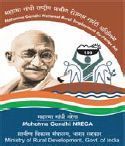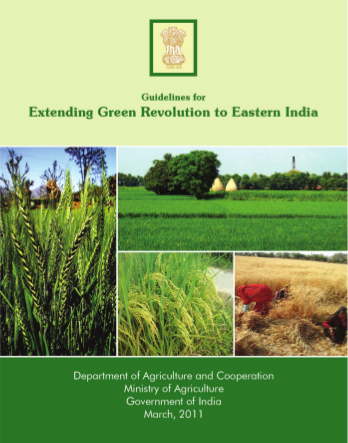Government Programmes
MoEF signs three agreements with World Bank for cleaning Ganga and conservation of biodiversity in June 2011
Posted on 16 Jun, 2011 04:55 PMThe River cleaning project is to the tune of US $ 1 billion (approximately Rs 4,600 crore) loan and credit that will form part of the Bank’s long-term support for cleaning the Ganga River. Two Biodiversity Conservation agreements are for a credit of US$15.6 million and US$8.14 million grant.
On this occasion, Sh Jairam Ramesh , Minister of State for Environment and Forest Minister said, “Two protected areas, one each in Uttarakhand and Gujarat, will put in place a complete new model of managing the protected areas while safeguarding the livelihoods of local communities. So far local community was looked as enemies of protected areas, but this has to be changed. We have to make local communities full partners in the protection and regeneration of these protected areas. These new models will be applied in other areas of the country.” Giving details of cleaning operations of last few years, the Minister said, “The objective of Ganga project is ‘by 2020 no municipal sewage and industrial effluent will be let into the river Ganga without treatment’. With the help from the World bank, we are taking a big step forward in achieving the Mission Clean Ganga”.
Of soils, subsidies and survival - A report on living soils by Greenpeace India
Posted on 15 Jun, 2011 09:54 AMSoil is one of the basic natural resources that supports life on Earth. It is an ecosystem, which is a home to several living organisms, which make the soil alive and give it a good structure and texture.
A living soil ecosystem nurtures and nourishes plants by providing a healthy medium to take roots through a steady supply of nutrients. Use of chemical fertilisers disturbs the natural soil ecosystem and its indiscriminate use has resulted in the degradation of soil. A total neglect of ecological/organic fertilisation by policy makers, extension officers and farmers during the peak Green Revolution period has also added to the soil health crisis.
This report pools together scientific literature as well as farmers’ views on this issues as many a times, while studying issues related to soil health or while making policies related to it, the farmer, who is the most important stakeholder, is seldom consulted. The report has made an effort to rectify this grave inadequacy by including the farmer's perspectives in the academic processes like the social surveys, public hearings and workshops and in this final report. Every section of the report has a component from the existing scientific literature available and another one on the farmers’ opinion on the same area.
Monitoring systems for incentive programmes - Learning from large scale rural sanitation initiatives in India
Posted on 14 Jun, 2011 03:45 PMSolid waste management initiatives in small towns - Lessons and implications - A WSP report
Posted on 10 Jun, 2011 05:12 PM These efforts were developed and launched through urban local bodies and which transformed service levels and helped improve compliance with the Municipal Solid Waste Rules, in a context where the state of MSW services in most of the Indian towns has been far from sati
Report of the workshop on High resolution cartosat satellite data
Posted on 04 Jun, 2011 01:01 PMIntroduction
Irrigation development is essential to ensure water and food security on a sustainable basis. Large scale development of irrigation infrastructure is the key to achieve these objectives. Accelerated Irrigation Benefit Program (AIBP) was launched by Government of India during 1996-97 to provide financial assistance to State Governments with the aim of speeding up the implementation of on-going irrigation / multi-purpose water resources projects. Monitoring of the projects covered under the AIBP is periodically done by the Central Water Commission / Ministry of Water Resources with the help of its regional offices situated all over the country. In the absence of real time maps during construction, the conventional monitoring is done through discussions with field authorities and random field checks. The monitoring reports with non-spatial information generally lack in the synoptic view of the critical gaps and the quantitative progress achieved in irrigation potential creation.
The availability of data from Cartosat - 1 and Cartosat - 2 high resolution satellites has enhanced the scope of infrastructure mapping and monitoring. This data has immense potential for assessment of progress of Irrigation works and closer visualization of spatial irrigation network.
Upward revision of incentive amount for construction of individual household latrine under Total Sanitation Campaign - PIB Release
Posted on 04 Jun, 2011 11:11 AMThe incentive for one unit of Individual Household Latrine (IHHL) has been raised from existing Rs. 2,200 (Rs. 2,700 for difficult and hilly areas) to Rs. 3,200 (Rs. 3,700 for difficult and hilly areas). The central share out of this shall be Rs. 2,200 (Rs. 2,700 in case of hilly and difficult areas) and State Government share shall be Rs. 1,000. Minimum beneficiary share shall be Rs. 300. State Governments are allowed the flexibility to provide higher incentive for a household toilet, of the same or higher unit costs from their own funds.
The consultative committee of the Ministry of Water Resources discusses the role and functions of Central Water Commission - PIB Release
Posted on 30 May, 2011 03:25 PMThe Consultative Committee of the Ministry of Water Resources met recently under the Chairmanship of Shri Salman Khurshid, Minister of Water Resources. Minister of State for Water Resources, Shri Vincent H. Pala was also present along with the secretary and other senior officers of the Ministry.
"NREGA implementation in State not satisfactory": MGNREGS News updates compiled by FES (16 - 30 April 2011)
Posted on 27 May, 2011 12:11 PM
Main highlights in this update:
- NREGA implementation in State not satisfactory: The report card on implementation of Mahatma Gandhi National Rural Guarantee Act (MGNREGA) is a mix bag for Assam, with at least 62 per cent households being provided employment under the flagship schemes, while ombudsman has not been constituted for any district and State fund.
Guidelines for extending green revolution to eastern India - Document prepared by Department for Agriculture and Cooperation (2011)
Posted on 27 May, 2011 07:50 AM The states of Assam, Bihar, eastern U.P, Chattisgarh, Jharkhand, Bengal, Orissa were allocated extra funds in the last year for this purpose.
The states of Assam, Bihar, eastern U.P, Chattisgarh, Jharkhand, Bengal, Orissa were allocated extra funds in the last year for this purpose.
Guidelines for rainfed area development programme - Document prepared by Department of Agriculture and Cooperation (2011)
Posted on 27 May, 2011 07:47 AMRainfed areas account for nearly 57 per cent of the agricultural land in India. These areas assume special significance in terms of ecology, agricultural productivity and livelihoods for millions. With proper management, rainfed areas have the potential of contributing a larger share to food grain production.





